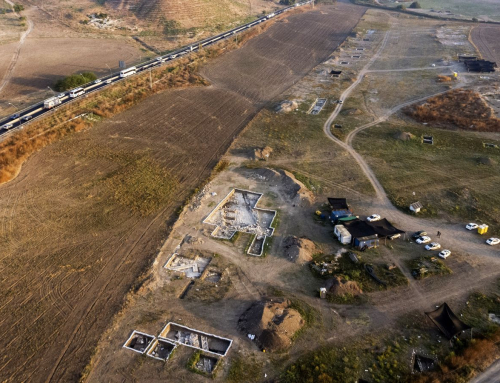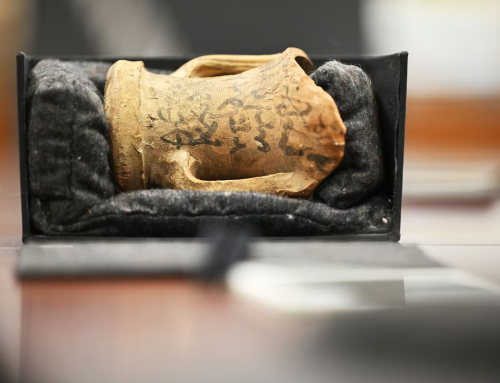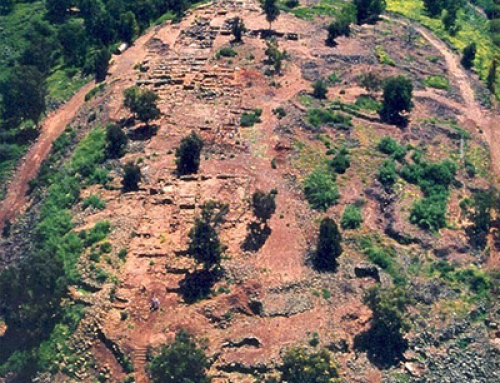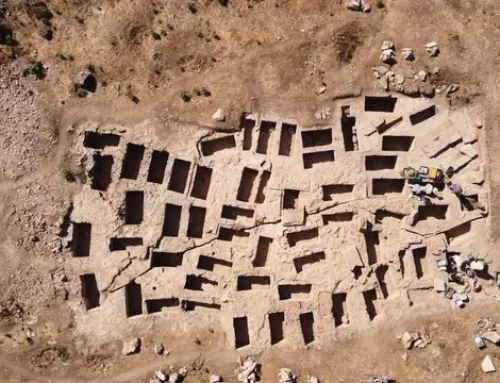While excavating ancient Neolithic hunting traps in Jordan’s southeastern desert near the site of Jibal al-Khashabiyeh, a team of French and Jordanian archaeologists (led by Dr. Tarawneh and Dr. Abu-Azizeh) made a unique discovery that sheds new light on daily life and belief in the prehistoric Levant. The traps, known as “desert kites,” were used extensively throughout prehistoric southwestern Asia. But while most have been dated to the fourth and third millennia B.C.E., the kites from Jibal al-Khashabiyeh date more than three millennia earlier, making them one of the earliest-known large-scale human constructions. Now, as reported by the Department of Antiquities of Jordan, the team has discovered a ritual complex associated with one of the kites that rewrites our understanding of the Neolithic people of the ancient Levant.
The unique ritual complex, which dates to around 7000 B.C.E., was made and organized by the Neolithic people to resemble a miniature desert kite. Inside were found two anthropomorphic stone figures. The taller figure stands 3.5 feet high and bears a depiction of a human face and possibly a drawing of a hunting trap. The smaller figure is a little over 2 feet tall and features a stylized but finely carved human face. The archaeologists nicknamed the figures Abu Ghassan and Ghassan, after the so-called “Ghassanian” culture the researchers associate with the site. In addition to the stone figures, the excavation also uncovered nearly 150 marine fossils, a variety of unusually shaped stones, animal figurines, worked flint objects, and a possible stone altar.
Although other Neolithic cultic sites have been discovered, including the famous site of Göbekli Tepe in southeastern Turkey, the Jibal al-Khashabieh discovery is unique. The site’s design as a miniature of a desert kite, as well as the depiction of a kite on one of the figures, clearly indicates the importance of hunting to the cultic and ritual activities of these Neolithic people. Researchers believe that prey animals may have been sacrificed at the site to invoke divine favor for successful hunts at the nearby kites. The site’s exceptional preservation as well as the detailed artistic depictions on the stone figures shed incredible light on the Neolithic people who once inhabited the region. Other Neolithic figurines and cultic places have been discovered in the southern Levant over the years, but this is the first site associated with this specific group.
Desert Kites and the Neolithic Ghassanian People
Desert kites were a common hunting installation throughout the arid and semiarid regions of prehistoric southwest Asia, with examples found from Saudi Arabia to Kazakhstan. These installations were made of multiple long stone walls, sometimes extending for miles, that converged to a single point or enclosure. The walls functioned to funnel wild gazelle and other animals into the small area at the end of the kite, where hunters would be waiting. The Jibal al-Khashabiyeh kites and associated finds show that the region’s Neolithic people were far more sophisticated than previously thought, and had developed a mass hunting strategy that would have required wide-scale cooperation and resource mobilization. The finds also suggest that the region’s Neolithic people hunted for more than subsistence purposes and likely had complex trade relations with neighboring regions.
Original Article – https://www.biblicalarchaeology.org/daily/ancient-cultures/ancient-near-eastern-world/jordan-shrine-of-neolithic-people/







